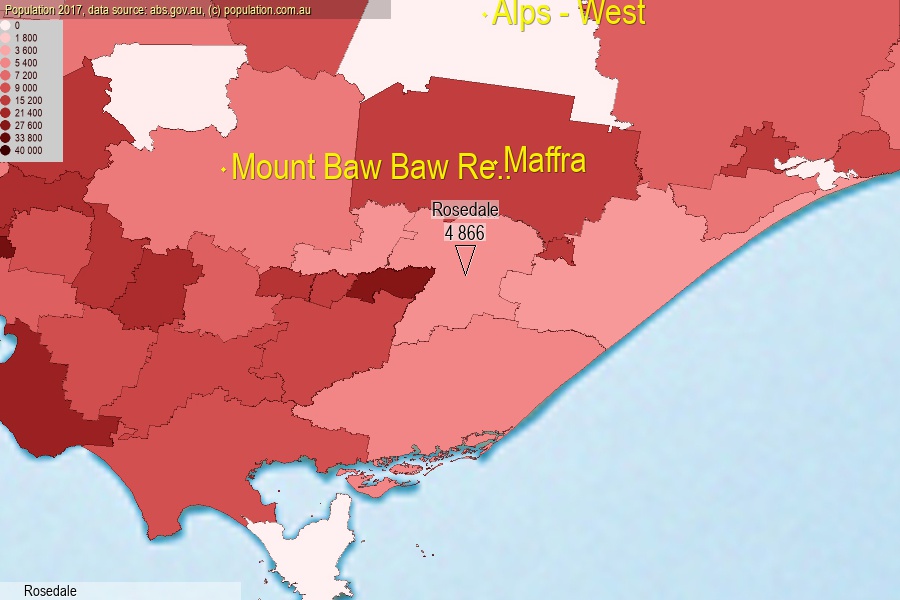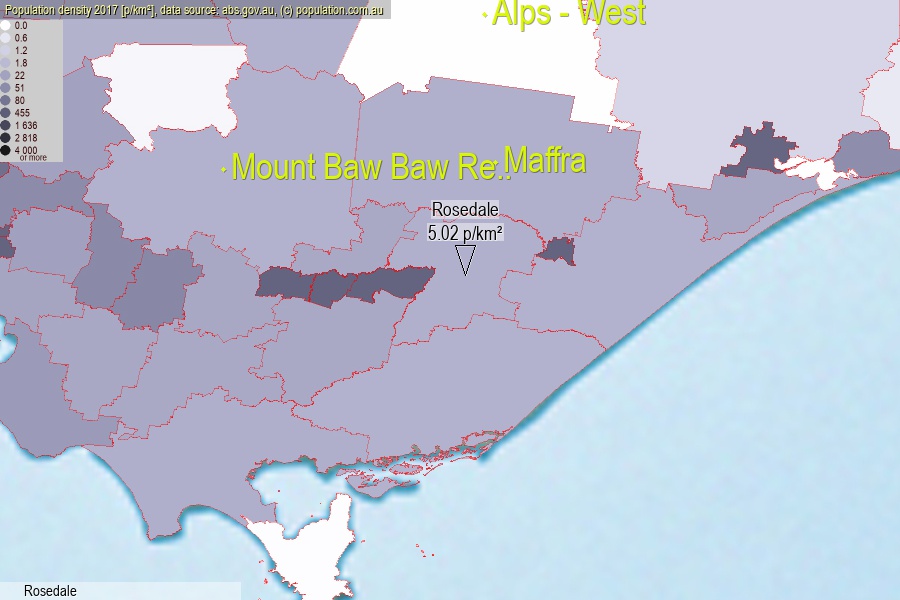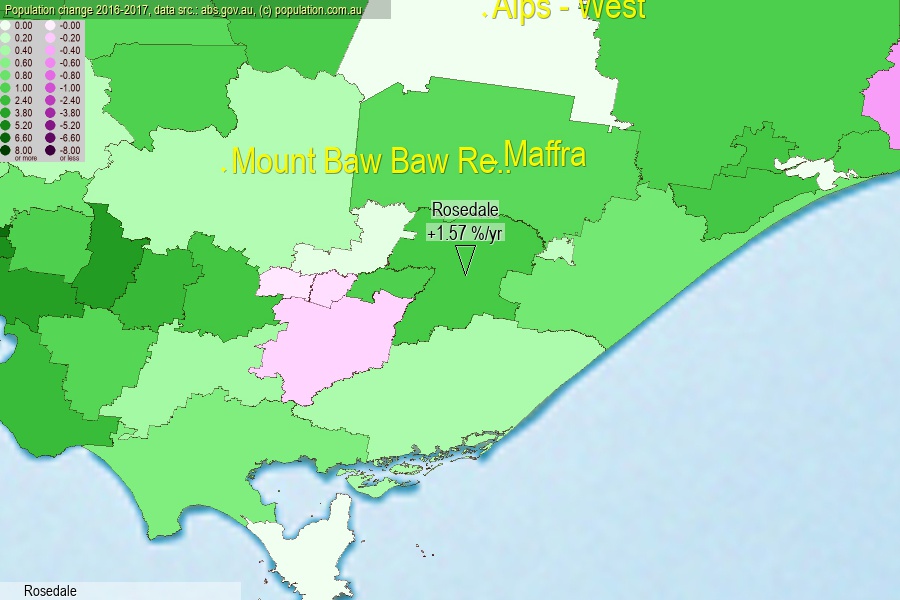 population.com.au
population.com.auLast official estimated population of Rosedale (as Statistical Area Level 2) was 4 866 people (on 2017-06-30)[2]. This was 0.02% of total Australian population and 0.076% of VIC population. Area of Rosedale is 968.50 km², in this year population density was 5.02 p/km² . If population growth rate would be same as in period 2016-2017 (+1.57%/yr), Rosedale population in 2025 would be 5 510. [0]



Click to enlarge. Rosedale is located in the center of the images.
Population [people], population density [p./km²] and population change [%/year] [2]
View borders » (new window) [4]
[1991-1992] 0.00 %/Yr.
[1992-1993] -0.86 %/Yr.
[1993-1994] -1.77 %/Yr.
[1994-1995] -1.54 %/Yr.
[1995-1996] -0.88 %/Yr.
[1996-1997] -0.07 %/Yr.
[1997-1998] -0.53 %/Yr.
[1998-1999] -0.18 %/Yr.
[1999-2000] -0.13 %/Yr.
[2000-2001] -0.52 %/Yr.
[2001-2002] -0.29 %/Yr.
[2002-2003] -0.59 %/Yr.
[2003-2004] -0.36 %/Yr.
[2004-2005] -0.73 %/Yr.
[2005-2006] -0.14 %/Yr.
[2006-2007] +0.21 %/Yr.
[2007-2008] +1.15 %/Yr.
[2008-2009] +2.29 %/Yr.
[2009-2010] +1.44 %/Yr.
[2010-2011] +1.99 %/Yr.
[2011-2012] +0.75 %/Yr.
[2012-2013] +0.60 %/Yr.
[2013-2014] +0.32 %/Yr.
[2014-2015] +0.36 %/Yr.
[2015-2016] +0.67 %/Yr.
[2016-2017] +1.57 %/Yr.
[0] Calculated with linear interpolation from officially estimated population
[1] Read more about SA2 and Australian Statistical Geography Standard (ASGS) on abs.gov.au
[2] Population data from Australian Bureau of Statistics (Population and density: 2017; change: 2016-2017)
[3] Digital Boundaries: Australian Statistical Geography Standard (ASGS) 2016.
[4] Border coordinates are simplifyed using Ramer-Douglas-Peucker algorithm.